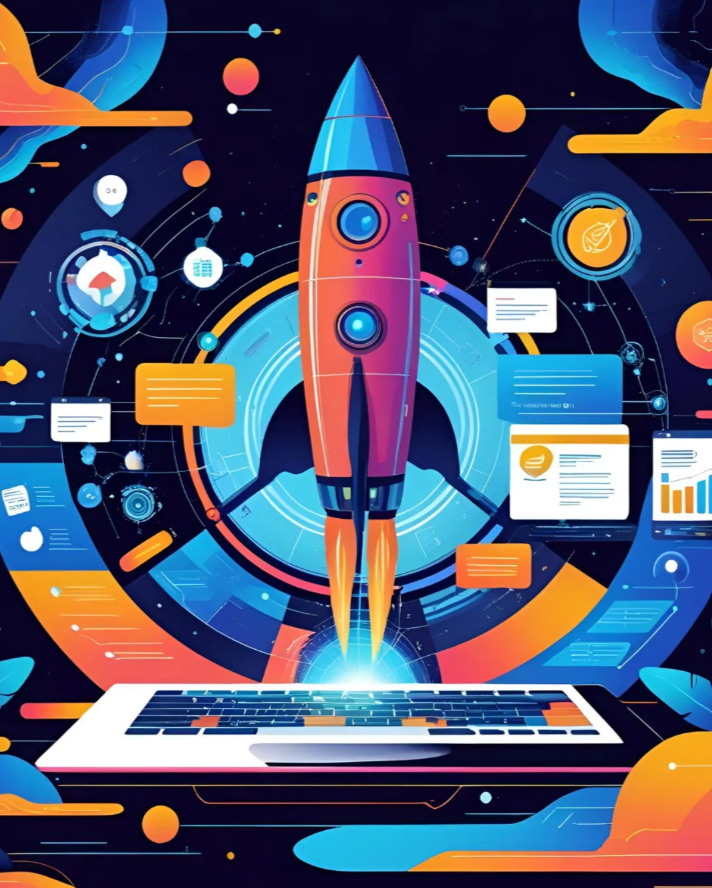Who Will Win the LLM War?
- GSD Venture Studios

- 12 hours ago
- 6 min read

Introduction
The tech world loves a good war. We’ve seen the PC wars, the browser wars, and the smartphone wars — each defining an era of computing. Today, we’re in the middle of another clash of titans: the LLM war.
LLMs, or large language models, aren’t just about building smarter chatbots. They represent a new foundation of computing — reshaping how we search, work, create, and even think. Whoever wins this battle won’t just dominate a product category; they’ll define the next decade of technology.
But here’s the twist: unlike past wars, there may not be one single winner.
So, who will win the LLM war? Let’s dive into the battlefield.
What Are LLMs and Why Do They Matter?
At their core, large language models are AI systems trained on massive datasets of text, enabling them to generate, summarize, translate, and reason with human-like fluency.
Why do they matter? Because they are:
Replacing search engines with conversational answers.
Boosting productivity through assistants embedded in tools like Microsoft Office or Google Workspace.
Reinventing creativity by generating code, stories, images, and even business strategies.
Transforming industries, from law and healthcare to customer service and travel.
In short, LLMs are the new operating system of knowledge. Whoever controls them will control the gateways to information and productivity worldwide.
The Global AI Arms Race
Think back to the space race of the 1960s. Nations invested billions to dominate the skies. Fast forward to today, and the same urgency surrounds AI supremacy.
Tech giants — Microsoft, Google, Meta, Amazon — are pouring tens of billions into AI infrastructure. Startups like Anthropic, Mistral, and Cohere are raising war chests to challenge them. Governments are even framing AI dominance as a national security issue.
This isn’t just about bragging rights. Whoever wins the LLM war could own the next trillion-dollar platform, much like Apple with smartphones or Microsoft with PCs.
The Main Contenders
OpenAI & Microsoft: The Enterprise Giants
Microsoft’s bet on OpenAI may go down as one of the savviest tech investments ever. With GPT models integrated into Office 365, GitHub Copilot, and Azure, Microsoft has distribution like no other.
Their strengths:
Global enterprise penetration (Office has over a billion users).
Brand recognition through ChatGPT.
Cloud dominance with Azure hosting AI workloads.
Their challenges? Cost. Running GPT-4-scale models is astronomically expensive, and scaling safely while maintaining profitability will be a constant battle.
Google DeepMind: The Data Titan
Google should have been the obvious leader in LLMs. After all, they invented the transformer architecture that made them possible. Their Gemini models promise powerful integration with Search, YouTube, and Workspace.
Their strengths:
Unmatched data advantage (billions of daily searches).
AI talent pool through DeepMind and Google Brain.
Platform integration across Android, Gmail, and Chrome.
But bureaucracy and fear of cannibalizing its ad business have slowed Google. They risk being the BlackBerry of the AI age — brilliant technology, but too slow to adapt.
Anthropic: The Trust Builder
Anthropic positions itself as the safety-first LLM company, with its Claude models built to be more reliable and aligned with human values.
Their strengths:
Enterprise trust — appealing to companies that fear ChatGPT’s unpredictability.
Strong financial backers, including Amazon and Google.
Clear niche in compliance-driven industries.
But Anthropic faces the scale problem: can a smaller player truly compete with trillion-dollar giants?
Meta: The Open-Source Champion
Meta took a radically different approach: instead of locking down its models, it open-sourced LLaMA.
Their strategy:
Win developer mindshare by becoming the “Linux of AI.”
Accelerate innovation by letting the community build on top.
Undercut rivals’ pricing by offering free alternatives.
The risk? Monetization. Open-source models spread quickly but are harder to turn into direct profits. Meta may dominate ecosystems without directly cashing in.
Amazon: The Infrastructure King
Amazon is playing a quieter but equally important role. Instead of leading with its own LLM, AWS is becoming the platform enabler, hosting Anthropic, Cohere, and countless others.
Their edge is clear:
Control of cloud infrastructure (40% of the market).
Chips like Trainium and Inferentia to lower compute costs.
Enterprise trust in AWS as the backbone of digital business.
In short, Amazon doesn’t need to win the LLM war directly — it can profit no matter who wins.
Startups: The Agile Innovators
Smaller players like Mistral, Cohere, Inflection, and xAI are pushing the boundaries:
Mistral is redefining efficiency with smaller, faster models.
Cohere is specializing in enterprise use cases.
Inflection (founded by ex-DeepMind leaders) is building personal AI agents.
xAI, led by Elon Musk, wants to compete on openness and reasoning.
They may not topple the giants outright, but history shows startups can force innovation that reshapes the landscape.
Key Battlefronts in the LLM War
The war isn’t fought on a single front. Instead, multiple arenas matter:
Search & Knowledge → Google vs. Microsoft.
Enterprise Productivity → Microsoft vs. Anthropic.
Developer Ecosystems → Meta’s open source vs. OpenAI’s walled garden.
Cloud Infrastructure → AWS vs. Azure vs. Google Cloud.
Consumer Assistants → Apple, Amazon Alexa, and others joining late.
Each front could produce a different winner.
Factors That Will Decide the Winner
The deciding factors aren’t just about model quality. They include:
Distribution & Ecosystem Reach: Who embeds AI into the apps we use daily?
Compute Efficiency: Can they drive down the cost of inference?
Trust & Safety: Who wins over regulators and enterprises?
Open vs. Closed Ecosystem: Will open-source eat the world again?
Hardware Control: NVIDIA dominates GPUs today, but custom chips (TPUs, NPUs) may tip the scales.
Global Reach: Who will dominate non-English-speaking markets?
Could There Be Multiple Winners?
Absolutely. Tech history rarely crowns a single champion.
PCs: Microsoft dominated, but Apple thrived.
Smartphones: Android and iOS coexist.
Search: Google is king globally, but Baidu rules China.
The most likely outcome is a multipolar AI ecosystem, with:
Microsoft/OpenAI dominating enterprise productivity.
Google defending consumer search and data-rich services.
Meta leading open-source ecosystems.
Anthropic and startups carving niches in compliance and specialization.
The Wildcards That Could Change Everything
Regulation: Governments could force transparency, data restrictions, or licensing that reshapes the playing field.
China: Baidu, Alibaba, and Tencent are building a parallel AI ecosystem walled off from the West.
Quantum Computing: If quantum breakthroughs slash compute costs, the power balance could reset overnight.
Surprise Startups: Just as Google blindsided Yahoo in the early 2000s, a yet-unknown player could disrupt the giants.
The Real Winners: Businesses and Consumers
No matter who “wins,” the real beneficiaries will be users and enterprises.
Costs will fall due to competition.
Enterprises will mix-and-match models, just like today they use both AWS and Azure.
Consumers will enjoy smarter assistants, more personalized apps, and seamless AI integration into daily life.
The LLM war will accelerate innovation, creating better tools for everyone.
Conclusion
So, who will win the LLM war?
The answer: no single company will dominate everything. Instead, we’ll see a fragmented but dynamic market where Microsoft, Google, Meta, Anthropic, Amazon, and startups all carve out their domains.
This isn’t a zero-sum game. The LLM war will define the 2020s and beyond, shaping how we work, learn, and interact with machines.
The real winners will be those who adapt quickly — and the billions of people who benefit from the innovation this war unleashes.
FAQs
1. What is an LLM in AI? An LLM (Large Language Model) is an AI system trained on massive text datasets that can generate, summarize, and reason with natural language.
2. Why are big tech companies competing over LLMs? Because LLMs are the foundation of the next computing platform, influencing search, productivity, and automation.
3. Will open-source models beat closed models like GPT-4? Open-source models (like Meta’s LLaMA) will dominate developer ecosystems, but closed models (like GPT-4) will monetize better in enterprise and premium use cases.
4. How will regulation impact the LLM war? Governments could enforce stricter safety, data, and compliance rules that slow innovation for some players while opening opportunities for others.
5. Who are the underdog startups in the LLM space? Companies like Mistral, Cohere, Inflection, and xAI are innovating in efficiency, trust, and specialization — and could disrupt giants in specific niches.




Comments